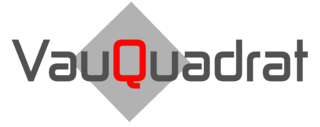Thermal straightening
Precise thermal straightening is essential for final shaping and quality assurance. VauQuadrat integrates state-of-the-art technologies to ensure accurate alignment and shaping of your components. Our approach not only optimizes the manufacturing process, but also minimizes energy consumption, resulting in sustainable and economical solutions. If the distortion is not “welded in”, minimal inverse straightening is possible. We will be happy to explain during a demonstration on site how it is possible, for example, that tempering does not even occur on chromium-nickel steel despite a straightening temperature of 550° C.
Special case thermal straightening of chromium-nickel steel
The challenges of flame straightening
The traditional flame straightening of stainless steel, especially chromium-nickel steel, is not only complicated, but also involves risks such as carburization and intracrystalline corrosion. The building regulations and standards (Z-30.3-6 and DIN EN 1090-2) emphasize the need to avoid flame straightening or to limit it to minimum temperatures and annealing times.
Why is chromium-nickel steel particularly demanding?
Chrome-nickel steels are characterized by their specific alloy, in particular by the minimum content of chromium and molybdenum. The oxidation of the chromium forms a protective passive layer on the surface. During flame straightening, however, there is a risk of chromium oxides forming due to excessively high temperatures, which impairs corrosion protection.
Deep induction as an effective solution
Our approach to thermal straightening with deep induction revolutionizes this process. In contrast to conventional flame straightening, we use electromagnetic induction to apply heat to the chromium-nickel steel in a targeted and precise manner. This enables a minimally invasive straightening process that avoids the dangers of flame straightening.
How does deep induction work?
By generating eddy currents and remagnetization losses, electrically conductive materials, including non-magnetic chromium-nickel steels, are effectively heated. The special design of our deep inductor allows the heat to be introduced into the material in a precise and controlled manner, resulting in a homogeneous temperature distribution.
Advantages of thermal straightening with deep induction
Precision and efficiency: Thanks to targeted heating, we can correct distortions efficiently and precisely.
Avoidance of hazards: Compared to flame straightening, no harmful oxides are produced and the risk of carburization and intracrystalline corrosion is minimized.
Quick results: The straightening effect occurs immediately, without the usual waiting time after flame straightening.
Minimal heat load: Thanks to the minimally invasive approach, the heat is applied specifically where it is needed without overheating the entire material.
